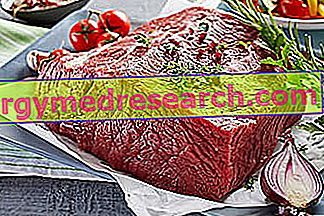Palmitic acid is one of the most common fatty acids found in nature. In its molecule they are counted well

As the name suggests, palmitic acid is characteristic of palm oil, whose saponified form was first discovered and isolated for the first time in 1840.
In addition to palm oil, palmitic acid is abundant in whole milk, butter, cheese and fatty meat.
| Food | Saturated fat (g) | Monounsaturated (g) | Polyunsaturated (g) | B.C. mystic (g) | B.C. palmitic (g) | B.C. steraico (g) |
| Lard | 39.2 | 45.1 | 11.2 | 1.3 | 23.8 | 13.5 |
| Butter | 51.3 | 21 | 3.0 | 7.4 | 21.7 | 10 |
| Olive oil | 13.8 | 72.9 | 10.5 | 0 | 11.3 | 1.9 |
| Palm oil | 49.3 | 37 | 9.3 | 1 | 43.5 | 4.3 |
| Cod oil | 22.6 | 46.7 | 22.5 | 3.6 | 10.6 | 2.8 |
| Parmesan hard cheese | 16:41 | 7.5 | 0.6 | 2.9 | 7 | 2.3 |
| Dried walnuts | 1.3 | 10.4 | 42.7 | 0 | 0.9 | 0.4 |
| Pork sausage | 11:27 | 14.3 | 4.0 | 3.9 | 6.6 | 3.9 |
| Chicken breast without skin | 00:33 | 0.3 | 00:28 | 00:01 | 00:21 | 0.1 g |
| Chicken breast with skin | 2.66 | 3.82 | 1.96 | 00:08 | 1.95 | 00:54 |
| Mackerel | 3.3 | 5.5 | 3.6 | 0.7 | 2, 125 | 00:43 |
| Cream brioche | 9.4 | 4.7 | 1.1 | na | na | na |
Several studies, and the same reports by the World Health Organization, attribute palmitic acid to an atherogenic and hypercholesterolemic effect, which negatively affects cardiovascular risk. The same negative effect is also attributed to myristic acid, but not to stearic acid, and explains why foods rich in saturated fats should be consumed in moderation. It must be realized, even though it may seem simplistic, that what matters is above all the dietary context, not so much the individual nutrient. In a balanced diet, in fact, palmitic acid is harmless in itself (among other things it is also synthesized by the body), but it can become dangerous when it is inserted in a context of frequent caloric excesses or is taken in particularly high quantities .



